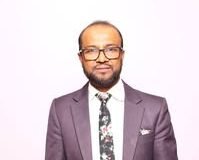
Taslim Ahammad:
Human resources management evolved from the task-oriented nature from personnel administration in the 1980s and 1990s to a strategy-focused extension of the organization in the 2000s. The transition into a strategic partnership role supports an effective HR management system. HR management is driven by HR functions and several HR principles.
Human Resource Management (HRM) is a collective term for all the formal systems created to help in managing employees and other stakeholders within a company.
Functions of human resource management described the scope of HR department. Every organization has its human resources, which should be managed effectively, because the success of the organization in the competitive environment is only due to the human resource factors, as all the other resources like financial, technological and so on are common to almost every organization. The HR department plays central role in managing the employees of the organization. For this purpose, it performs certain functions of the Human Resource Management, which we may also the key functions of human resource management. Business should be aware of the below functions: employment, recruitment and selection, training and development, employee services, salary and wages, industrial relations, health and safety, education, working conditions, appraisal and assessment, compensation & benefits, employee & labor relations and human resource research.
The HR department thrives on specific principles, as briefly discussed below: (i) Commitment – One aspect that the HR department tries to deal with is job security. To guarantee job security, many employees know that they need to show commitment to the company and their job duties. The HR management comes in to put measures that ensure that staffing levels correspond to the company’s needs, and in the process, assure employees of their long-term positions within the organization. (ii) Competence – The success of a firm depends on the competency of its employees. The HRM department tries to sustain workforce competency by providing training opportunities. It also schedules orientation programs, which provide avenues to enlighten new employees on a company’s mission and objectives. (iii) Cost-effectiveness – Firms must ensure that they compensate their workers accordingly. The workers reward system must be able to sustain the firm or the organization. (iv) Coherence – All the methods taken by an organization or a company in the management of human resources should be in consonance with the firm’s vision and mission. In like manner, human resources managers must direct their concentration on what the firm needs and the abilities of employees. (v) Comprehensiveness – This covers the efficient management of all aspects of the individuals working with considering that human resources is actually the most essential resource the firm possesses. In other words, the health, financial, transportation and tools or anything that workers require to work must be properly taken care of. (vi) Recruitment to retirement – HR is all about dealing with employees from recruitment to retirement. It includes manpower planning, selection, training and development, placement, wage and salary administration, promotion, transfer, separation, performance appraisal, grievance handling, welfare administration, job evaluation and merit rating, and exit interview. People behind the machine count – Previously, it was the machine behind the people that counted. Today, people are the real power to drive organizations forward. Machines only assist people. Ultimately, the machine is servant to men, not the other way around. (vii) Hire for attitude, recruit for skills – Attitude is the key to employee engagement and success. Hence, HR leaders must emphasize attitude rather than experience. It is better to hire a new job seeker with high attitude and no experience than one with a rotten attitude and years of experience. If employees possess a good attitude, they will have the ability absorb the knowledge, skills, and abilities that are essential to perform their tasks effectively in the workplace. (viii) Appreciate attitude but respect intelligence – It is true that both attitude and intelligence are essential to improve the organizational bottom line. If HR leaders find it is tough to get both, they should choose attitude over intelligence as it helps accomplish organizational goals and objectives. (ix) Hire slow, fire fast – HR leaders must be slow in hiring the right talent for their organizations. They must look for the right mindset, skill set, and tool set in job seekers during recruitment. If they find that bad apples entered into their basket, they must be removed quickly to contain further damage to their organizations. (x) Shed complexity, wed simplicity – People today prefer to work in flat organizations rather than tall ones. Tall organizations often have hierarchies with a bureaucratic mindset that doesn’t work in the present context. Staffs are happy to work with partners rather than with bosses. So shed complexity and wed simplicity to achieve organizational excellence and effectiveness. (xi) HR leaders are the masters in makers – HR leaders are masters of their trades, not jacks of other trades. They know everything about HR, but they don’t necessarily know much about other aspects in the organization. CEOs are masters in their own domains and jacks of other domains. They are masters in their areas and know something about others areas. Thus, HR leaders must acquire knowledge about other areas and acquire technical and business acumen to become kings and queens the chief executives. (xii) To serve is to lead and live – HR leaders must serve people with pleasure without any pressure. They must become torchbearers of human capital and knowledge. They must learn, unlearn, and relearn to stay relevant.
Human resource management does not just handle the recruitment of new employees; it also oversees the other business related matters for company that want to downsize. Overall, human resource management guarantees the smooth running of employees within a company mainly followed by HR functions and principles.
Taslim Ahammad, Assistant Professor
Bangabandhu Sheikh Mujibur Rahman Science and Technology University, Gopalganj, Bangladesh
 Weekly Bangla Mirror | Bangla Mirror, Bangladeshi news in UK, bangla mirror news
Weekly Bangla Mirror | Bangla Mirror, Bangladeshi news in UK, bangla mirror news






